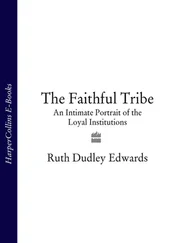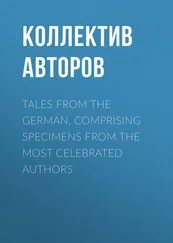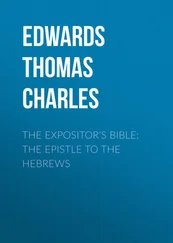Lyford Edwards - The Transformation of Early Christianity from an Eschatological to a Socialized Movement
Здесь есть возможность читать онлайн «Lyford Edwards - The Transformation of Early Christianity from an Eschatological to a Socialized Movement» — ознакомительный отрывок электронной книги совершенно бесплатно, а после прочтения отрывка купить полную версию. В некоторых случаях можно слушать аудио, скачать через торрент в формате fb2 и присутствует краткое содержание. Жанр: foreign_religion, foreign_antique, foreign_prose, на английском языке. Описание произведения, (предисловие) а так же отзывы посетителей доступны на портале библиотеки ЛибКат.
- Название:The Transformation of Early Christianity from an Eschatological to a Socialized Movement
- Автор:
- Жанр:
- Год:неизвестен
- ISBN:нет данных
- Рейтинг книги:4 / 5. Голосов: 1
-
Избранное:Добавить в избранное
- Отзывы:
-
Ваша оценка:
- 80
- 1
- 2
- 3
- 4
- 5
The Transformation of Early Christianity from an Eschatological to a Socialized Movement: краткое содержание, описание и аннотация
Предлагаем к чтению аннотацию, описание, краткое содержание или предисловие (зависит от того, что написал сам автор книги «The Transformation of Early Christianity from an Eschatological to a Socialized Movement»). Если вы не нашли необходимую информацию о книге — напишите в комментариях, мы постараемся отыскать её.
The Transformation of Early Christianity from an Eschatological to a Socialized Movement — читать онлайн ознакомительный отрывок
Ниже представлен текст книги, разбитый по страницам. Система сохранения места последней прочитанной страницы, позволяет с удобством читать онлайн бесплатно книгу «The Transformation of Early Christianity from an Eschatological to a Socialized Movement», без необходимости каждый раз заново искать на чём Вы остановились. Поставьте закладку, и сможете в любой момент перейти на страницу, на которой закончили чтение.
Интервал:
Закладка:
The first conception perhaps holds the idea of a present world kingdom but puts emphasis on the futurity of the kingdom. Its ultimate consumation is not by gradual, natural development, but by the catastrophic reappearance of Christ. This Second Advent is to be preceded by tremendous portents of the most terrible sort.
The second conception is that the kingdom is already present in Christ's appearance as the Messiah. It is to grow by the natural laws of spiritual development to its full realization. A considerable length of time is conceived as necessary for the attainment of mature growth. The consumation of the kingdom in the Second Advent is to be unexpected and sudden and none but the Father knows when it will take place.
The third conception, that of Chiliasm, is that the Second Advent of Christ is close at hand. Anti Christ and his confederates are to be destroyed at Megiddo. Satan is to be bound for 1000 years during which is the Millennium, when the martyrs are raised in the first resurrection and reign with Christ at Jerusalem. This conception is found in the Revelation and perhaps I Cor. XV, 24-27. All the essential elements of it are to be found in pre-existing sources, e.g., the 1000 years in II Enoch, the reign of the saints in Testaments of the XII Patriarchs, etc.
These three conceptions were variously confused in early Christianity. All the New Testament writers hold, for instance, to the immediately imminent Second Advent. How many of them were Chiliasts we have no way of knowing. The earliest, Christian writing extant outside the New Testament, which deals with this subject is perhaps Papias, 70-155 A.D. He is a most materialistic Chiliast and quotes II Baruch as an authentic utterance of Christ handed to himself by apostolic tradition. 5 5 Irenaeus Adv. Haer. V 33. II Baruch XXIX.
Barnabas is another apostolic Chiliast. He expressly teaches a millennial reign of Christ on earth. The six days of creation are the type of six periods of 1000 years each. The seventh day is the millennium, since with God "one day is as a thousand years." The earthly, millennial sabbath is to be followed by an eighth and eternal day in heaven. The Millennium is near at hand. Barnabas does not quote Revelation. His views can be drawn equally well or better from II Enoch, I Enoch and other Jewish sources.
The first Chiliast we know of to get into disrepute was the famous heretic, Cerinthus, (last part of first century). His heresy had nothing to do with his Chiliasm, as it seems to have been a sort of Judaistic Gnosticism and Gnosticism in general was not favorable to Chiliasm. However the fact that so abhorrent a heretic held Chiliastic views did not help those views in the judgment of later Christians.
About the end of the first century also Chiliasm came into rather disreputable prominence as a leading doctrine of the Ebionites, a sect of antitrinitarian Judaistic-Christian heretics. This sect was wide spread though not particularly numerous and aroused the bitter antagonism of the orthodox. As in the case of Cerinthus, their heresy had nothing necessarily to do with Chiliasm. But here again Chiliasm had the misfortune to get into bad company.
In the middle of the second century Chiliasm appears to have been the belief of the majority of Christians though it never found formal expression in any creed. Justin Martyn, 110-165 A.D., tells us that Christ is to reign with the patriarchs for 1000 years in a rebuilt Jerusalem. He bases this belief on Rev. XX, 4-5 and says he holds this doctrine as part of the body of Christian faith. He adds, however, that "many good and true Christians think otherwise." This later statement is the more notable as it is the only difference between orthodox Christians which he mentions. He places the Ebionites outside the Christian pale.
The first non-Chiliasts we meet with in Christian history are the Gnostics. Of their actual position on Chiliasm we know practically nothing except by inference. They did not apparently fight it. They simply tacitly ignored it. In the long and minute descriptions of various Gnostic systems that have come down to us nothing is said on the subject; but the systems as outlined leave no place for the Chiliastic doctrines.
The first open enemies of Chiliasm that are to be found in the Church are the Alogi, a sect that flourished in Asia Minor about 160-180 A.D. According to Harnack: "The representatives of this movement were, as far as we know, the first in the Church to undertake a historical criticism, worthy of the name, of the Christian scriptures and the Church tradition." 6 6 Hist. of Dogma, Vol. III, p. 19.
They were rationalisticly inclined, desired to keep prophecy out of the Church and denied on essentially the same internal grounds as modern students, the Johannine authorship of the Revelation and also of the Fourth Gospel. With less reason they ascribed the Revelation to the heretic Cerinthus. Unfortunately we know but little about them. Hippolytus wrote against them and defended the apostolic authorship of Revelation and the Fourth Gospel in two books now lost. But the Alogi are criticised only mildly, and indeed Irenaeus does not class them as heretics at all. Opposition to Chiliasm was manifestly not looked upon as an important matter in the last quarter of the second century – at least in Rome. 7 7 Ens. H. E. VI 27-2.
To this same period belong the writings of Gaius of Rome who asserts that the Heretic Cerinthus wrote the Revelation, and also those of Bishop Melito of Sardis, a saint of great repute, who was an ardent Chiliast. So that at this period both Chiliasm and non-Chiliasm would seem to be perhaps equally wide spread and certainly equally permissable. Irenaeus, Bishop of Lyons 120-202 A.D., was a strong Chiliast. He describes in minute detail the overthrow of the Roman Empire, the reign of Anti-Christ for 1260 days (three and half years) the visible advent of Christ, the binding of Satan, the joyful reign of Christ in the rebuilt Jerusalem with the risen saints and martyrs over the nations of the world for a thousand years. Then follows the temporary raging of Satan, the last victory, the general resurrection and judgment, and the consumation of all things in a new heaven and a new earth.
The ascription of genuine divine inspiration to the Sibylline Oracles by the early Church writers is well known. It is a noteworthy fact that the Chiliasts 8 8 Justin Martyn, Tertullian, Lactantius.
seem to be much more inclined to quote the Oracles than the non-Chiliasts. The Christians' addiction to the Oracles called forth the derision of Celsus. 9 9 Ad. Celsus LXI.
Origen makes no defense and it is at least possible to conjecture that the reason is that he disapproved of the use made of the Oracles by the Chiliasts. The Oracles were of course made use of by all sorts of agencies which for any reason wished ill to the Roman authority and yet dared not indulge in secular sedition. Some enthusiastic Chiliast put forth an Oracle, probably in the reign of Marcus Aurelius, which was more definite than prudent. According to this prediction the end of Rome and the final consumation of all things was due in the year 195-196 A.D. 10 10 Sib. Orac. VIII, 148 seq.
There is reason to believe that this prophecy represented the belief of a considerable number of Christian Chiliasts. While there is no extant evidence to that effect, it is a rational deduction, that when the year 195-196 A.D. passed without any unusual occurrences, the prestige of the persons trusting the Oracle would be damaged. So far as these persons were Chiliasts, Chiliasm would suffer in repute. That this was actually the case is as nearly certain as any logical conclusion about psychological reactions well can be.
About the year 156 A.D. there arose in Phrygia the movement called Montanism. Essentially it was a reaction against the growing secularization of Christianity. It spread to the rest of Asia Minor, Egypt, Italy, Spain, and especially Carthage and surrounding districts in North Africa. It was the strongest movement in favor of a revival of primitive Puritanism that occurs in early Church history. It lasted in the East almost till the Arab Invasion; in the West it did not die out until the time of Augustine. The Montanists are the most pronounced Chiliasts we meet with. Not indeed in their theory but in their practice. One Syrian Montanist bishop "Persuaded many brethren with their wives and children to go to meet Christ in the wilderness; another in Pontus induced his people to sell all their possessions, to cease tilling their lands, to conclude no more marriages, etc., because the coming of the Lord was nigh at hand." 11 11 Hippolytus, Com. on Daniel.
The Montanist prophetess, Prisca, about 165 A.D. said: "After me there will come no other prophetess but the end." A peculiarity of eastern Montanistic Chiliasm was the idea that Christ would reign not in Jerusalem but in Pepuza, a small town in Phrygia. In accord with this idea Montanus tried to get all believers to settle in this town to await the Lord's coming. The western Montanists however, of whom Tertullian was chief, held to the regular belief that the Messianic kingdom would be centered in Jerusalem.
Интервал:
Закладка:
Похожие книги на «The Transformation of Early Christianity from an Eschatological to a Socialized Movement»
Представляем Вашему вниманию похожие книги на «The Transformation of Early Christianity from an Eschatological to a Socialized Movement» списком для выбора. Мы отобрали схожую по названию и смыслу литературу в надежде предоставить читателям больше вариантов отыскать новые, интересные, ещё непрочитанные произведения.
Обсуждение, отзывы о книге «The Transformation of Early Christianity from an Eschatological to a Socialized Movement» и просто собственные мнения читателей. Оставьте ваши комментарии, напишите, что Вы думаете о произведении, его смысле или главных героях. Укажите что конкретно понравилось, а что нет, и почему Вы так считаете.












